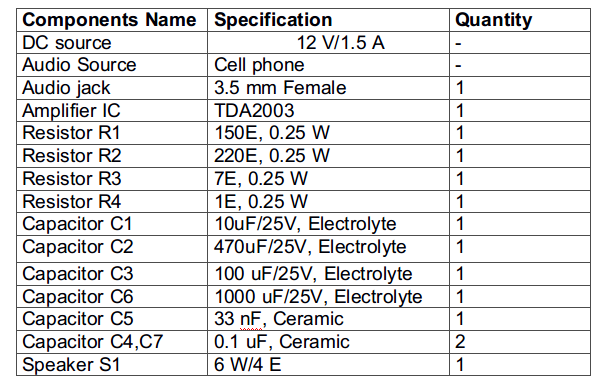

Circuit Connections –
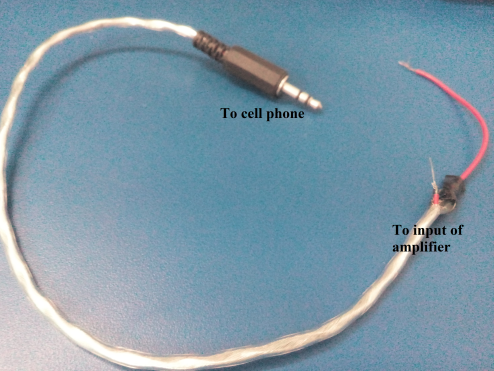
3) TDA2003 – TDA2003 is a monolithic audio power amplifier, so all the components of the amplifier circuit are integrated on the chip itself. This IC can sustain a peak voltage up to 40 V and has output current capability up to 3.5 A. The IC can be operated by supplying a voltage between 8 V and 18 V. The IC has the following pin configuration –


Fig. 5: Pin Diagram of TDA2003 IC
The TDA2003 has the following internal circuitry –

TDA2003 is basically an operational amplifier with high power output. It can be used a power amplifier for car audio systems. The car audio amplifier designed in this tutorial using TDA2003 has a non-inverting configuration as the audio input is provided at the non-inverting input pin of the IC. This IC can output a power from 6 Watts to 12 Watts. If more power is tried to be drawn from the amplifier (beyond its specifications), the output voltage (amplitude of the audio signal) can start clipping. The clipping effect can severely damage the load which is the speaker in this case.
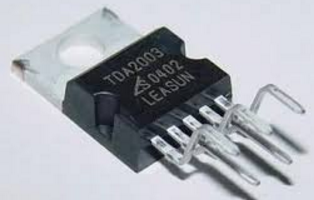
According to the datasheet of the TDA2003, the output power of this amplifier depends on the impedance of the load. The IC has the following power outputs at 40 dB for different load impedances at the output –

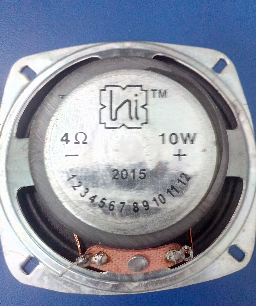
Fig. 9: Typical Image of 10 Watt 4 Ohms Speaker
The following precautions must be taken care while assembling the circuit –
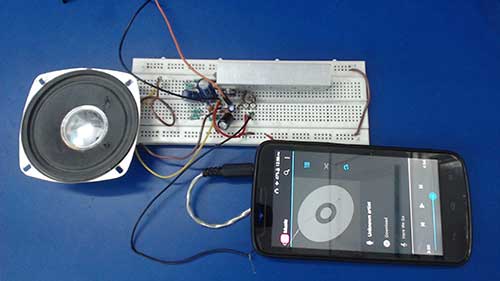
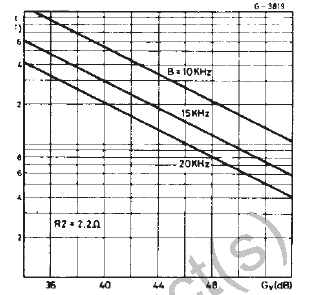
Fig. 11: Graph showing Frequency Response Curve of TDA2003
As per the availability, a capacitor of 33 nF is used for C5 and a resistor of 150 ohms is used for R1.

You may also like:
Project Video
Filed Under: Audio, Electronic Projects, Tutorials
Filed Under: Audio, Electronic Projects, Tutorials

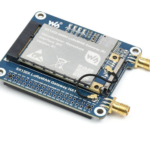
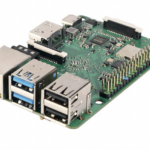

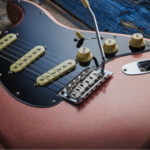



Questions related to this article?
👉Ask and discuss on EDAboard.com and Electro-Tech-Online.com forums.
Tell Us What You Think!!
You must be logged in to post a comment.